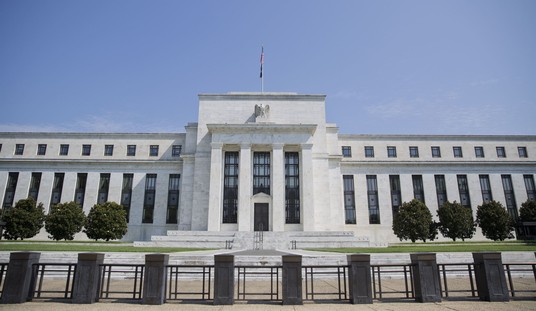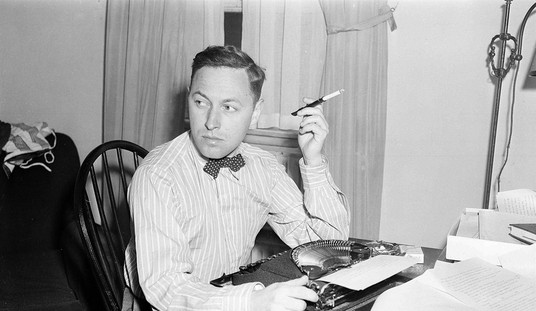And speaking of fire and brimstone, Media Matters’ Eric Boehlert apparently sees Lee Harvey Oswald lurking behind every tea party protest:
A President was killed the last time right-wing hatred ran wild like this
That being John F. Kennedy, who was gunned down in Dallas, of course.
I’ve been thinking a lot of Kennedy and Dallas as I’ve watched the increasingly violent rhetorical attacks on Obama be unfurled. As Americans yank their kids of class in order to save them from being exposed to the President of the United States who only wanted to urge them to excel in the classroom. And as unvarnished hate and name-calling passed for health care ‘debate’ this summer.
The radical right, aided by a GOP Noise Machine that positively dwarfs what existed in 1963, has turned demonizing Obama–making him into a vile object of disgust–into a crusade. It’s a demented national jihad, the likes of which this country has not seen in modern times.
But I’ve been thinking about Dallas in 1963 because I’ve been recalling the history and how that city stood as an outpost for the radical right, which never tried to hide its contempt for the New England Democrat.
And neither did Lee Harvey Oswald, the self-admitted communist who actually killed him:
(Much more under the break.)
What happens to a nation when a world-changing event occurs of such tremendous magnitude that half the population can’t process who caused it?
September 11? Try the November 1963 assassination of President John F. Kennedy. As James Piereson recently told me, “If Kennedy had been killed by a right winger with the same evidence that condemned Oswald, there never would have been any talk about conspiracies. It would have fit neatly into the moral framework of 1950s and ’60s-style liberalism. And the liberals would have been off and running with it, and no one would have talked about conspiracies.”
That’s the subject of Piereson’s new book, Camelot and the Cultural Revolution: How the Assassination of John F. Kennedy Shattered American Liberalism, in which he argues both that Kennedy was a victim of the Cold War, and that the repression of his killer’s ideology caused tremendous psychological damage to the collective health of the nation.
It’s not primarily an attempt to once again prove that Oswald acted alone, as authors such as Gerald Posner, and most recently, Vincent Bugliosi have demonstrated, to the satisfaction of virtually everyone whose name isn’t Oliver Stone. But it is an attempt to explain an incredible transformational shift in American culture, which occurred during the years from 1963 and 1968, particularly in the media and on college campuses.
Even simply looking at photographs, it’s obvious that a decade that began with Sinatra and Miles Davis in cool sharkskin suits and ended in the mud of Woodstock had undergone a enormous cultural shift. In 1973, Pat Moynihan looked back on the decade which had recently concluded and said, “Most liberals had ended the 1960s rather ashamed of the beliefs they had held at the beginning of the decade.” The attitudes amongst liberal elites changed particularly radically during that decade.
Piereson believes that it was a combination of the news of the days leading up to Kennedy’s assassination, Jacqueline Kennedy’s desire to have her husband be a Lincolnesque martyr to civil rights, and a fear of upsetting the Soviet Union and Cuba that caused the background of Oswald to be suppressed.
But the actual causes of liberal disorientation regarding Kennedy’s death and the motives of his killer predate his assassination by several years. It was during the 1950s and early ’60s that that liberal elites declared America’s nascent and disparate conservative movements to be a greater threat to the nation than the Soviet Union, as illustrated by films of the day such as Dr. Strangelove and The Manchurian Candidate. And the subtext of those films was very much based upon “a vast literature that developed in the ’50s and early ’60s about the threat from the far right,” Piereson says, specifically mentioning Richard Hofstadter’s The Paranoid Style In American Politics, and Daniel Bell’s The Radical Right.
As Piereson writes, leading up to Kennedy’s fateful trip to Dallas, there was a remarkable amount of violence in the south, caused by a backlash against the civil rights movement. In October of 1963, Adlai Stevenson, the Democrats’ presidential candidate in the 1950s who had been appointed the ambassador to the UN by Kennedy, traveled to Dallas for a speech on United Nations Day. Stevenson is heckled, booed, spat upon, and hit over the head with a cardboard sign. Stevenson says publicly, there’s a “spirit of madness” in Texas. And Kennedy’s White House staffers believe that he should cancel his already announced November visit to Dallas.
Thus, at the beginning of November 1963 a framework has been established that the far right is the threat to American democracy, “and that they’ve moved from heated rhetoric to violent act,” Piereson says.
“So when the news spreads that Kennedy has been killed, the immediate response is that it must be a right winger who’s done it,” Piereson notes. And while the Birch-era right definitely had severe issues, JFK’s assassin on November 22, 1963 had, of course, a polar opposite ideology. “When the word is now spread that Oswald has been captured, and that he has a communist past, and they start running film of him demonstrating for Castro in the previous summer, there is a tremendous disorientation at this.”
Disorientation Occurs
The shock that Kennedy was in reality a victim of the Cold War simply did not compute on a national level. This was in stark contrast to the narrative that framed the death of Abraham Lincoln a century prior. “When Booth shot Lincoln, everybody knew that Booth was a southern partisan, and they could easily understand why he wanted to kill Lincoln,” Piereson says. “Northerners blamed the south for this, and you assimilate it into the moral framework of the Civil War.”
In contrast, “Liberals had great difficulty assimilating this idea that a communist would kill Kennedy. It made sense to them that an anti-civil rights person might do it, or an anti-communist might do it, but not a communist.”
But that’s exactly who Oswald was, having defected to the Soviet Union in 1959 and then spending two and a half years there, and attempting to denounce his American citizenship along the way. Piereson says that his April 1963 attempt to kill Edwin Walker, former army general, anti-civil rights leader, and head of the John Birch Society in Texas says much about Oswald as well. In addition to his anti-civil rights action, Walker also gave frequent speeches calling for the overthrow of Castro. Piereson believes that Oswald’s attempt to kill Walker sheds light on why he killed Kennedy: his policies towards Cuba and his leading the nation’s other Cold War actions of the time.
“However, that is not how the Kennedy assassination was interpreted,” Piereson says, with enormous understatement. Instead, a sense of collective guilt is imposed on the nation through its liberal elites and media. “And this is really the first time that you get on the liberal-left this idea that America is guilty. But this however now becomes a metaphor for the left for everything that happens moving on in the 1960s.”
And of course, in the run-up to Boehlert’s imagined Dallas Part II, it’s worth looking back at who actually caused the violence at health care-related events this summer. August began with the DNC telling its supporters:
The Republicans and their allied groups – desperate after losing two consecutive elections and every major policy fight on Capitol Hill – are inciting angry mobs of a small number of rabid right wing extremists funded by K Street Lobbyists to disrupt thoughtful discussions about the future of health care in America taking place in Congressional Districts across the country.
A month and half later, and the DNC continues that same tone, with rhetoric such as this:
“The message to opponents of change who would lie or misrepresent the truth should be clear. We are going to respond forcefully and consistently with the facts, and you will no longer be able to peddle your lies with impunity. Through tools like ‘Call ‘Em Out,’ you will be met with a rain of hellfire from supporters armed with the facts and you will be held to account.”
And the rain of hellfire? Well not in a literal sense of course, no matter how eschatological the left can get, but Kenneth Gladney is an African-American who who attacked by leftwing SEIU goons while holding a Gadsden (“Don’t Tread On Me” flag). Bill Rice was the man who had his finger bitten off(!) by a Moveon.org supporter.
And as Karl of Hot Air writes:
Of course, establishment journalism’s delusions about the Right extend beyond the casual imputation of racism. The legacy media has also been obsessed with the idea that the Right is thisclose to boiling over into violent revolution. Reason’s Jesse Walker has a must-read essay detailing the paranoid style in center-left politics and the history of past “brown scares” waged against the Right. In the current debate over ObamaCare, if the Obama=Hitler signs are actually the work of Lyndon LaRouche nuts who support Canadian-style medicine, the legacy media will not notice. If furthering the narrative of the “angry white man” opposition to ObamaCare requires MSNBC to lop off the head of an African-American man holding a rifle with a video editor, so be it. These acts and omissions further a “larger truth,” which is to say a narrative not tethered to reported fact.
Are there nuts on the right? Of course; there are nuts in any group that contains millions of people. But despite a boomer history that begins right around the time Donald Draper moved into the corner office at Sterling-Cooper, just as not all wars are Vietnam part II, not all scandals are Watergate Part II, and not all protests are the South of the early 1960s.
James Piereson noted in his book that immediately upon being told that Lee Harvey Oswald had been arrested for assassinating her husband, Jackie Kennedy replied, “He didn’t even have the satisfaction of being killed for civil rights. It had to be some silly little Communist. It even robs his death of any meaning.”
And apparently, of any real history, as well. But then, as Jonah Goldberg noted in several chapters of Liberal Fascism, the left has a unique ability to jettison its history when it outlives its usefulness — or cast the worst elements of America’s history off on the right when appropriate. And of course, considering the number of times nationalization of the health care industry has been attempted, it might be wise for the left to find a less toxic metaphor for what’s becoming a recurring revolt by the American people against those who would reduce their choices and freedoms.
(H/T: Kathy Shaidle.)











Join the conversation as a VIP Member